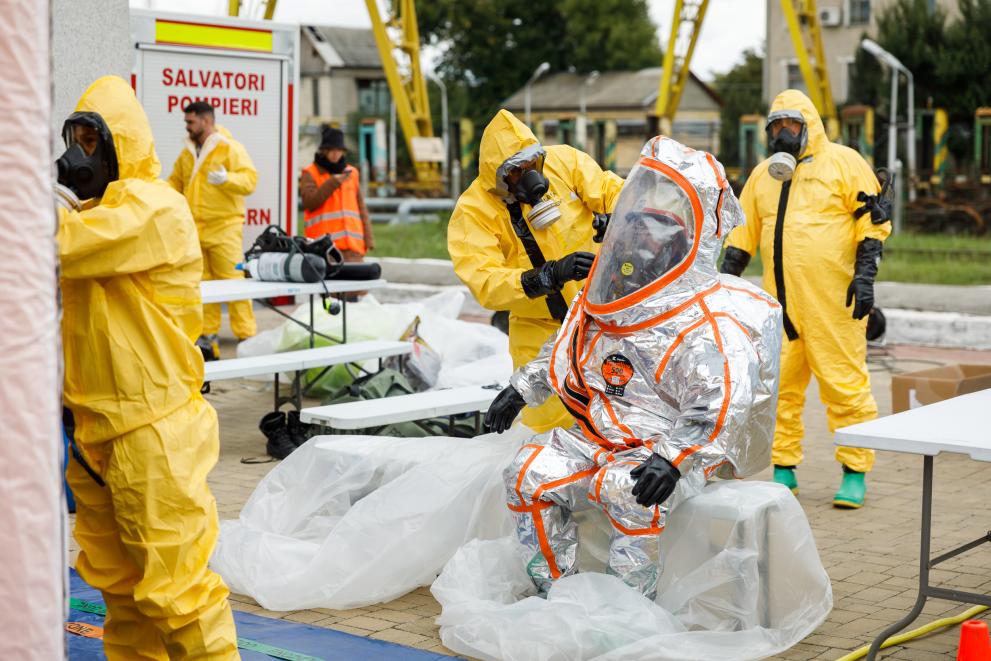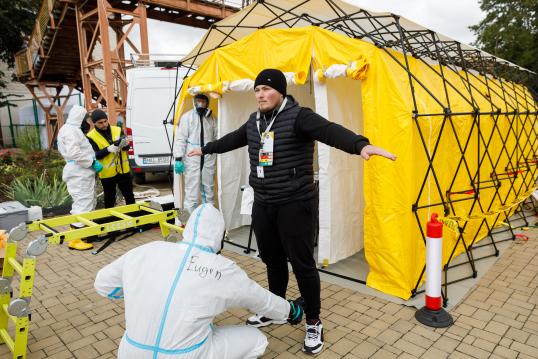
As the European Union marks the 15th anniversary of the EU CBRN Centres of Excellence (CBRN CoE) initiative, it reaffirms its commitment to strengthening regional capabilities and fostering cross-border cooperation to prevent, prepare for and respond to Chemical, Biological, Radiological and Nuclear (CBRN) incidents. To put this vision into practice, a large-scale multi-country exercise was conducted in the border city of Ungheni, Moldova under the auspices of the EU CBRN Centre of Excellence Project 106 – Tabletops, Exercises, Simulations and Trainings (TEST).
A real-life simulation
The exercise brought together more than 100 participants from 10 countries across Southeast and Eastern Europe including Albania, Armenia, Azerbaijan, Bosnia and Herzegovina, Georgia, the Republic of Moldova, Montenegro, North Macedonia, Serbia and Ukraine. The event was supported by the Romanian Border Police, which provided operational assistance in evaluating the exercise. The simulation was designed to train the responders to manage a complex CBRN incident in a real-life setting.
Explore the full photo gallery.
Bridging gaps and sharing best practices
The exercise began with a tabletop training session, where responders assessed needs, identified knowledge gaps, and received targeted guidance. This theoretical preparation was then put to the test in a live simulation at Ungheni train station, where emergency services from Moldova and EU partner countries worked side-by-side to respond to a simulated complex incident.
“By working together we make sure that good practices are shared and that we can make sense together of very complex situations that may arise during CBRN events.”
Antonella Cavallo (Program Manager, CBRN Global Actions, European Commission)
Achieving Key Objectives
The exercise achieved several important objectives, including:
- Validating practical coordination mechanisms: the exercise demonstrated the effectiveness of coordination mechanisms, highlighting the importance of international cooperation in responding to CBRN threats.
- Revealing Strengths and Weaknesses: The simulation revealed strengths in regional response capacities and identified areas for further training and improvement.
- Fostering multinational cooperation: The exercise brought together responders from different countries, with varying standard operating procedures, experiences, and language skills, to work together in a challenging environment.
“Ten countries took part in this exercise. Multinational teams were created, which was a big challenge because of different standard operating procedures, different experience and language skills”
Marian Kolencik (Exercise Director, P106 Key Expert)
Building a Safer World
Through projects like P106, the EU, with the support of UNICRI, works hand in hand with international partners, national authorities and experts to enhance global to rare but high impact CBRN threats. Continued cooperation, training and capacity building are essential to reduce risks and protect citizens worldwide.
“A successful exercise is one in which you learn something. And I know from the initial feedback from the participants that they learnt a lot.”
John Jones (Project 106 Team Leader)
The event was delivered by the project’s consortium partners: GOPA PACE, ISEM Institute, GOPA Worldwide, the National Crisis Centre and the University of Lodz.
Learn more about how the Service for EU foreign Policy Instruments is putting Foreign policy into action here.
Details
- Publication date
- 29 October 2025
- Author
- Service for Foreign Policy Instruments
- CBRN areas
- Bio-safety/bio-security
- Border control and monitoring
- First response
- Public and infrastructure protection
- CBRN categories
- Chemical
- Biological
- Radiological
- Nuclear
- CoE Region
- SEEE - South East and Eastern Europe

